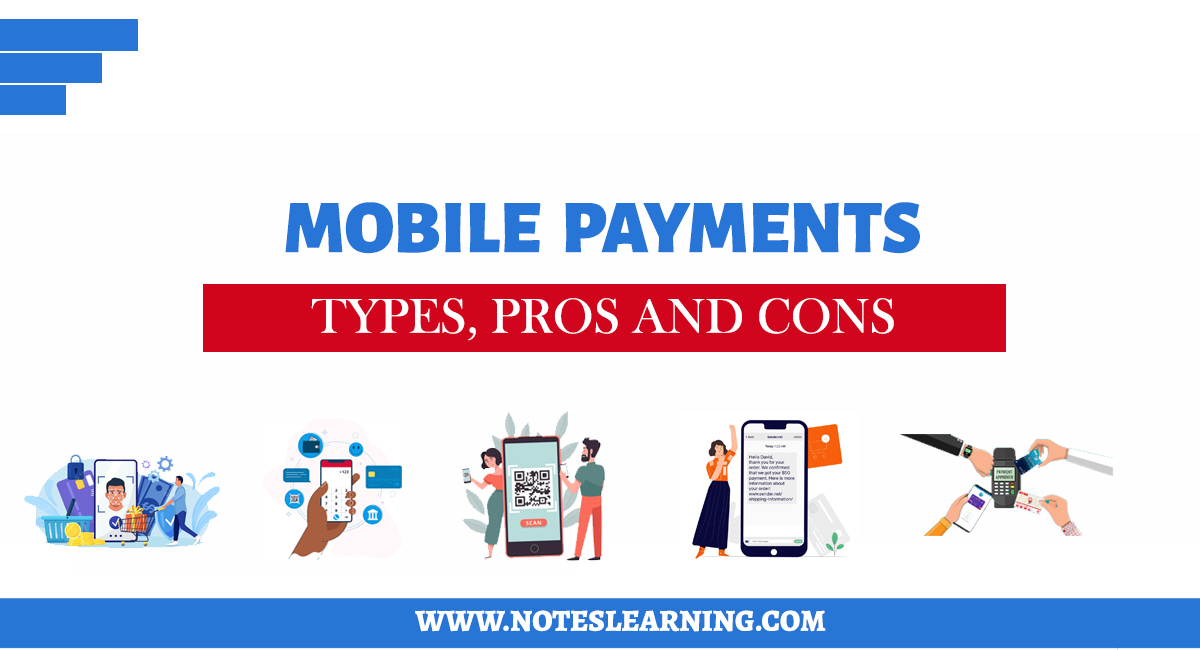Introduction
Mobile payments refers to the use of a mobile device, such as a smartphone and personal digital assistant (PDA), to make financial transactions. This can include things like buying products or services, paying bills, and transferring money. Mobile payments can be made through a variety of methods, including near-field communication (NFC), text messaging, or mobile apps. Some popular examples of mobile payment systems include Apple Pay, Google Wallet, and Samsung Pay.
Payment through mobile is considered as one of the biggest innovations and financial movements. Mobile payment has made financial transactions accessible and easier. This has improved the cash flow in the business environment.
Types of Mobile Payment Methods
There are several different mobile payment methods available which are mentioned below:
NFC payments
NFC stands for near-field communication. This technology is a short range wireless technology. These payments use NFC technology to allow users to make payments by holding their mobile device close to a payment terminal. Examples include Apple Pay, Google Wallet, and Samsung Pay.
Text Message payments
These payments allow users to make payments by sending a text message to a specific number. In this system, payment and approval of payment by sender and receiver is completed via SMS or text message. An example of this is the US-based company, Venmo.
Mobile Apps
These payments are made through a mobile app, such as PayPal, FonePay, BharatPe, Esewa, Khalti, Cellpay and can be used to make payments in-store or online.
QR Code Payments
These payments allow users to make payments by scanning a QR code displayed on a payment terminal or at a merchant’s website. QR stands for “Quick Response” which stores the payment related data. An example of this is Alipay in china. Nowadays, QR code is one of the most used systems for payment.
Direct Carrier Billing
This method allows users to make purchases and pay for them on their mobile phone bill. In simple terms, we make payment for our purchase to the mobile carrier service. This type of billing is mostly popular in the entertainment industry for gaming and streaming services.
Mobile Web Payments
This method allows users to make payments through a mobile web browser. This is an online service. In this service, funds are transferred from customer to the merchant using an e-commerce website. This is an electronic exchange of funds through the internet.
Biometric Authentication Payments
These payments use biometric authentication methods, such as fingerprint or facial recognition, to verify a user’s identity before allowing a payment to be made. It is relatively a new concept.
Some of the real world Mobile Payment Methods
Here are some real-life examples of mobile payment methods:
● Apple Pay: This is a mobile payment and digital wallet service by Apple Inc. that allows users to make payments using their iPhone, iPad, or Apple Watch. Users can make payments in-store by holding their device near a payment terminal, or online by using the service through participating apps and websites.
● Google Wallet: This is a mobile payment system developed by Google that allows users to store credit and debit card information on their device, and make payments in-store or online. It uses NFC technology to allow users to make payments by holding their device near a payment terminal.
● Samsung Pay: This is a mobile payment service developed by Samsung that allows users to make payments in-store by holding their device near a payment terminal, or online by using the service through participating apps and websites.
● PayPal: This is an online payment system that allows users to make payments and money transfers through their mobile device. Users can make payments in-store or online by using the PayPal app or through participating apps and websites.
● Alipay: This is a mobile payment and digital wallet service developed by Alibaba Group Holding Limited. It allows users to make payments in-store by scanning a QR code, or online through participating apps and websites.
● Venmo: This is a mobile payment service owned by PayPal that allows users to make payments and money transfers through their mobile device. Users can send money to other Venmo users by sending a text message to a specific number.
● WeChat Pay: This is a mobile payment service developed by Tencent Holdings Limited. It allows users to make payments in-store by scanning a QR code, or online through participating apps and websites.
Pros and Cons of Mobile Payment
Some pros and cons of mobile payment methods are given below:
Pros
- Convenience: Mobile payments allow users to make transactions quickly and easily using their mobile device.
- Speed: Mobile payments can be faster than traditional methods, such as cash or credit card transactions.
- Security: Many mobile payment methods use advanced security features, such as fingerprint or facial recognition, to protect against fraud.
- Increased Mobility: Mobile payments allow users to make transactions from anywhere, at any time.
- Increased Efficiency: Mobile payments can reduce the need for cash or credit card transactions, making it easier for merchants to manage their transactions.
Cons
- Limited Acceptance: Not all merchants accept mobile payments, which can limit the ability for users to make transactions.
- Battery Life: Mobile payments can drain a device’s battery life, making it necessary to keep the device charged.
- Coverage: Mobile payments require a stable internet connection, which may not be available in certain areas.
- Security concerns: Some users may be concerned about the security of mobile payments, particularly if they are not familiar with the technology.
- Complexity: Some users may find mobile payment methods too complex and difficult to use.
- Dependence on device: if the mobile device is damaged or lost, the user will not be able to make payments until they get a new device.
Reference

